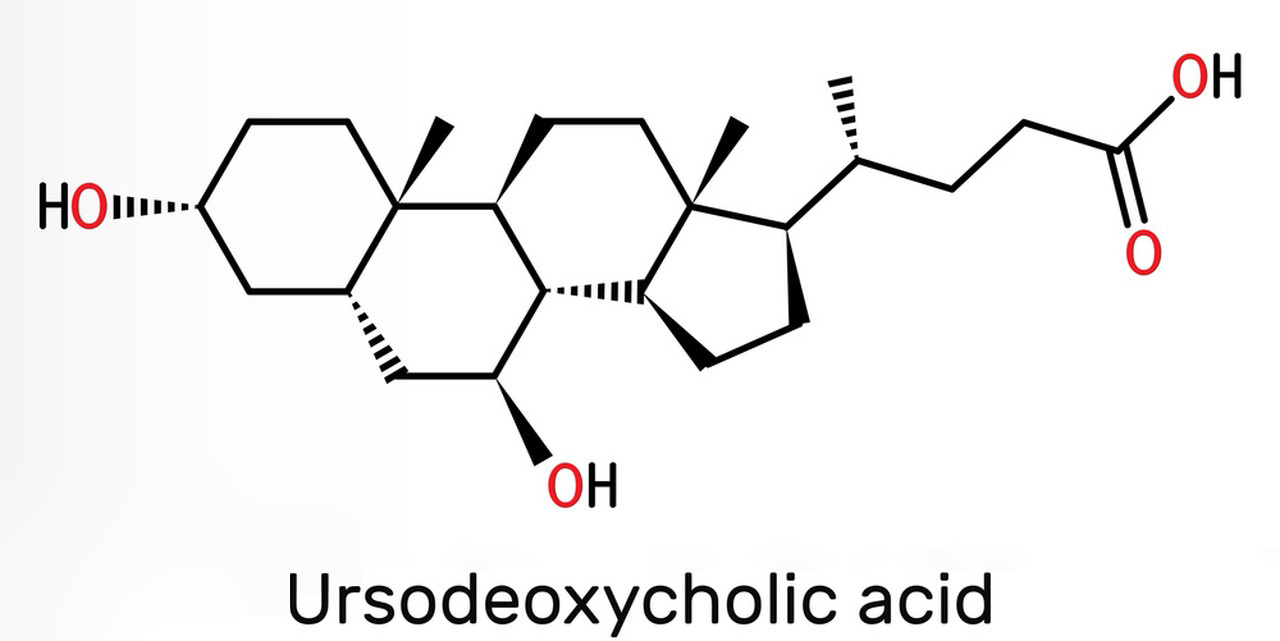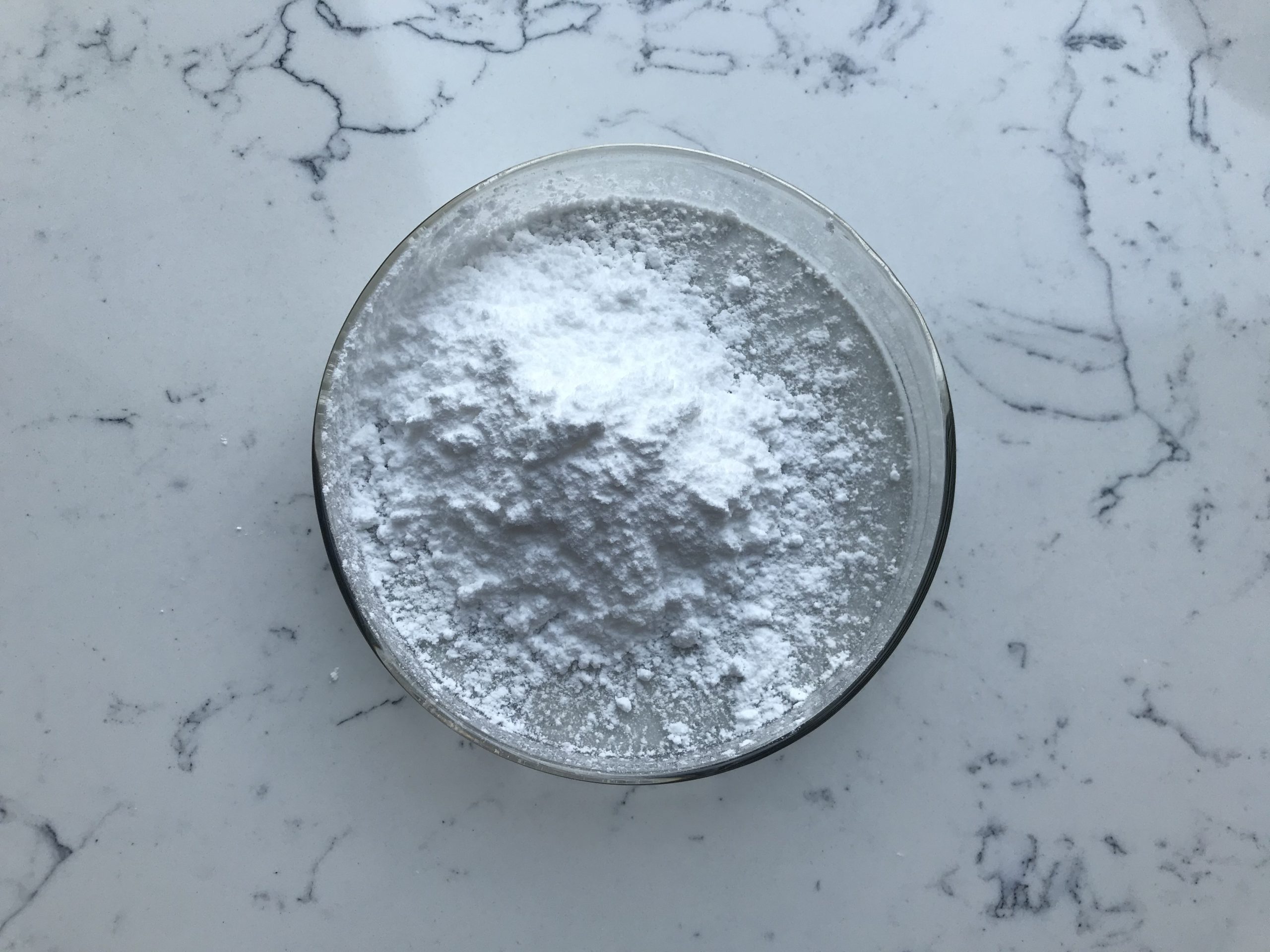UDCA(Ursodeoxycholic acid) is a bile acid that is naturally produced by the body and can also be synthesized for use as a medication. It is primarily used to treat liver and gallbladder disorders, including primary biliary cholangitis (PBC) and certain types of gallstones. Here is some information about the chemical structure and physical properties of UDCA:
Chemical Structure of UDCA:
UDCA is a steroidal compound and is a secondary bile acid. Its chemical structure is characterized by a tetracyclic ring system with a cyclopentanophenanthrene nucleus. The molecular formula of UDCA is C24H40O4, and its systematic name is 3α,7β-Dihydroxy-5β-cholan-24-oic acid. The structural formula is as follows:

Physical Properties of UDCA:
The physical properties of UDCA include:
1.Molecular Weight: The molecular weight of UDCA is approximately 392.58 g/mol.
2.Melting Point: UDCA has a melting point that typically ranges from 201°C to 203°C (394°F to 397°F).
3.Solubility: UDCA is sparingly soluble in water but is more soluble in organic solvents like ethanol, chloroform, and methanol.
4.Appearance: UDCA is a white to off-white crystalline powder.
5.Odor: It is typically odorless.
6.Taste: It may have a slightly bitter taste.
7.pKa: The pKa values for the carboxylic acid groups in UDCA are approximately 5.4 and 6.8.
8.Hydrophobic/Hydrophilic: UDCA is considered amphipathic, meaning it has both hydrophobic and hydrophilic regions in its molecular structure.
UDCA is administered orally as a medication and is used to reduce the levels of cholesterol in the bile and to promote the dissolution of certain types of gallstones. Additionally, it can help improve liver function and reduce the damage caused by certain liver diseases.
Please note that the information provided here is based on my knowledge as of January 2022, and there may have been developments or new findings related to UDCA since then.

Materials and Methods of UDCA
Ursodeoxycholic acid (UDCA) is a medication and bile acid used to treat various liver and gallbladder conditions, including primary biliary cholangitis (PBC), primary sclerosing cholangitis (PSC), and gallstones. It may also have off-label uses in certain liver and gastrointestinal disorders. The materials and methods for UDCA administration typically involve the following:
Materials:
Ursodeoxycholic Acid (UDCA): This is the active pharmaceutical ingredient (API) of the medication.
Dosage Form: UDCA is available in various dosage forms, including tablets, capsules, and oral suspension. The choice of dosage form depends on the patient’s age, condition, and the prescribing physician’s preference.
Pharmaceutical Excipients: Various excipients are used to formulate the dosage form, including fillers, binders, disintegrants, lubricants, and coatings, depending on the specific formulation of the medication.
Packaging Materials: This includes the blister packs or bottles in which the medication is dispensed.
Methods:
Patient Evaluation: The first step in administering UDCA is to assess the patient’s medical history and condition. The physician will determine the appropriate dosage and duration of treatment based on the patient’s specific needs.
Prescription: A healthcare provider will issue a prescription for the medication, specifying the dosage, frequency, and duration of the treatment.
Dispensing: A pharmacist or healthcare professional dispenses the UDCA medication to the patient. They ensure that the correct dosage form and strength are provided.

Administration: The patient follows the prescribed regimen, taking UDCA as directed by their healthcare provider. Typically, UDCA is taken orally with a glass of water or as instructed by the healthcare provider.
Dosage Adjustment: Depending on the patient’s response to the treatment and any side effects, the healthcare provider may adjust the dosage or treatment duration.
Monitoring: Regular monitoring of the patient’s liver function and overall health is essential to assess the effectiveness of UDCA and detect any adverse reactions.
It’s important to note that the specific materials and methods can vary depending on the pharmaceutical formulation of UDCA and the patient’s individual circumstances. Patients should always follow their healthcare provider’s instructions when taking UDCA, and if they have any questions or concerns, they should seek guidance from a medical professional.
